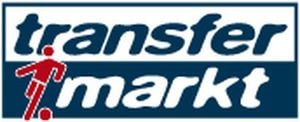Crypto start-up Plasma has made headlines by unveiling the technical features of its stablecoin-specific blockchain, designed to facilitate fast and efficient global stablecoin transfers. On March 26, 2025, the company revealed that its blockchain employs a "HotStuff-inspired" consensus mechanism, which is a key innovation in the realm of blockchain technology.
Plasma's blockchain is purpose-built for Tether, the world’s largest dollar-pegged stablecoin, boasting a market capitalization of $144 billion. Tether accounts for over 60% of the total stablecoin market, and its issuer reported an impressive $13.7 billion in profits last year. The early backers of Plasma include notable figures such as venture capitalist Peter Thiel, Tether's CEO Paolo Ardoino, and Split Capital's Zaheer Ebtikar.
Designed to be a Bitcoin sidechain, Plasma's blockchain ensures full compatibility with the Ethereum Virtual Machine (EVM). This compatibility is crucial, as most stablecoin activities occur on smart contract blockchains like Ethereum, Tron, and Solana. Plasma's execution layer is built on Rust Ethereum, also known as Reth, a modular engine that enables the running of any Ethereum smart contract.
One of the standout features of Plasma is its ability to facilitate zero-charge USDT transfers and confidential transactions while ensuring compliance. This is particularly appealing to users seeking to minimize transaction costs. Zaheer Ebtikar stated, "Stablecoins are the killer app of crypto and we haven’t had anyone build infrastructure for stablecoin interaction at a base level. Plasma changes this with a unique ability to maximize TPS while minimizing transaction fees for users because the chain is not trying to fit every use case under the sun."
The HotStuff consensus mechanism, which Plasma employs, is a form of Byzantine Fault Tolerance (BFT) that allows consensus even when some nodes may be faulty or malicious. To illustrate, one can imagine a group of friends trying to agree on a picnic date. If the majority agrees, they can move forward despite a few unreliable members. HotStuff enhances this by allowing seamless leader replacement if the decision-maker behaves erratically, thus reducing delays and improving efficiency.
In traditional BFT systems, nodes send multiple confirmations, which can slow down the process. However, HotStuff streamlines it by having a leader node propose a decision, which validator nodes confirm in a single step. Plasma claims, "At its core, Plasma leverages PlasmaBFT, a Fast HotStuff–inspired consensus protocol optimized for rapid finality and low latency, supporting high-frequency global stablecoin transfers." Finality in blockchain refers to how quickly transactions are confirmed and added to blocks, making them irreversible.
Moreover, Plasma has integrated a built-in Bitcoin bridge that utilizes the same decentralized validators as its BFT mechanism. This bridge periodically links updates to the Bitcoin blockchain, allowing Ethereum applications to work seamlessly with Bitcoin, which serves as the settlement layer. Plasma explains, "By periodically anchoring state diffs on Bitcoin, Plasma achieves seamless interoperability and uses Bitcoin as a settlement layer—delivering permissionless finality, stronger censorship resistance, and a universally verifiable source of truth."
Steven Lubka, head of Swan Bitcoin, commented on the new stablecoin infrastructure, suggesting that it seems to be betting on the premise that other blockchains are primarily suited for stablecoins and require Bitcoin’s security properties to be effectively utilized.
In addition to its innovative consensus mechanism, Plasma offers custom gas tokens, enabling fee payments in USDT or BTC. This flexibility is expected to attract a wide range of users looking for efficient transaction solutions. Plasma's commitment to confidentiality and compliance further enhances its appeal in a regulatory environment that increasingly scrutinizes blockchain technologies.
Overall, Plasma's ambitious project aims to redefine the landscape of stablecoin transactions, making them faster and more cost-effective while ensuring compliance with existing regulations. With significant backing from influential figures in the cryptocurrency space, the future looks promising for this innovative blockchain start-up.
In a different sector, the drone industry in Germany is witnessing a significant transformation as companies pivot towards military applications. Quantum Systems GmbH, based in Geretsried near Munich, is known for producing drones primarily for civilian purposes, such as agricultural monitoring. However, the ongoing geopolitical tensions have prompted a shift in focus towards weapon-capable drones.
According to a report in the April 2025 issue of Manager-Magazin, Quantum is exploring plans to produce drones that can carry explosives and execute kamikaze-style missions. This shift comes as Germany and the European Union ramp up military capabilities in response to threats from Russia.
Florian Seibel, a former Bundeswehr pilot and co-founder of Quantum, along with Sven Kruck, has established a new company called Stark Defence. This venture aims to produce advanced drones for military use, but current shareholders of Quantum, including Bayern Kapital and Projekt A, are unable to invest in weaponry due to restrictions.
Stark Defence has emerged with a vision to redefine defense technology in Europe, claiming to provide NATO with a crucial edge. The company is reportedly based in both Berlin and Kyiv, reflecting its ambitions to operate in a rapidly evolving defense landscape.
Recently, Stark Defence attracted significant attention by securing an investment of 15 million euros from Peter Thiel, the well-known co-founder of PayPal and a prominent venture capitalist. Thiel's involvement is particularly noteworthy given his libertarian views and influence within U.S. political circles, especially regarding defense spending in Europe.
The investment has propelled Stark Defence to a valuation of 200 million euros, a remarkable achievement for a company that has only been operational for less than a year. This rapid growth highlights the increasing demand for innovative defense solutions in light of current global tensions.
As the drone market evolves, the intersection of technology and defense continues to grow. Stark Defence's development of weapon-capable drones reflects a broader trend where companies are adapting to meet the needs of modern warfare while also navigating the complexities of investment and regulation.
Both Plasma and Stark Defence exemplify how innovation in technology can be harnessed to address contemporary challenges, whether in the realm of cryptocurrency or defense. As these sectors evolve, the implications for global markets and security dynamics will be profound.






